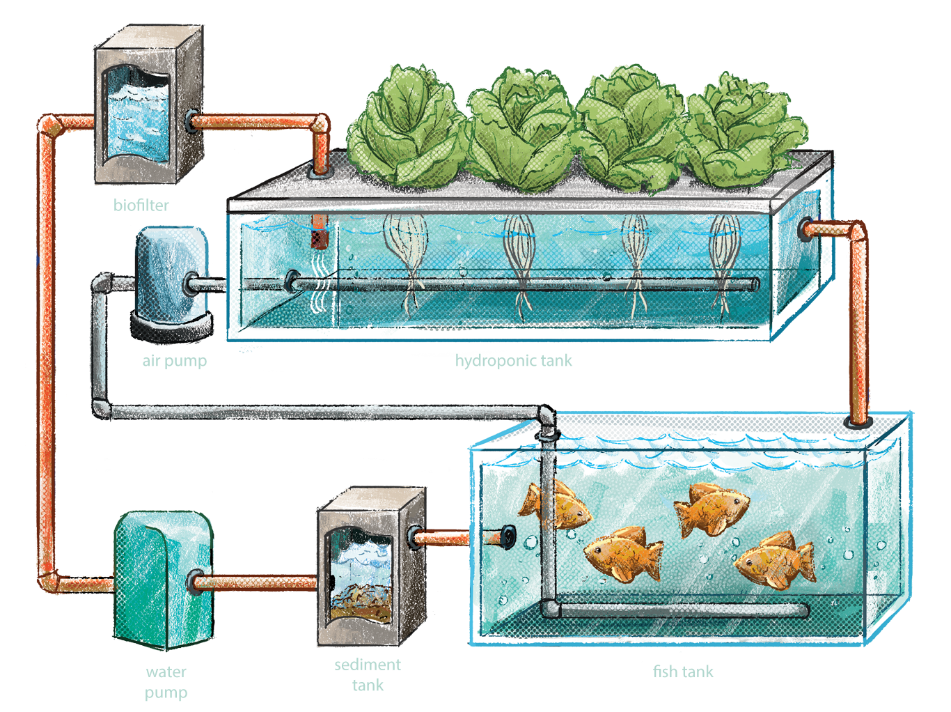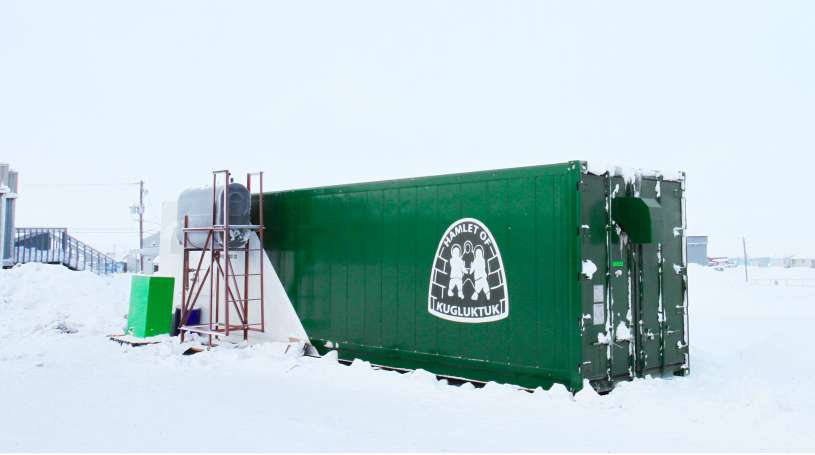As the human population grows, so does food demand. While famine has been greatly reduced, adequate food supply for all has not been achieved and we are expecting another 1 to 3 billion mouths to feed in the next few decades. Classical agriculture is driving deforestation, and its yields are suffering from reduced soil quality and climate change variability. Could an Aquaponics system be the solution to food insecurity?
—
What is an Aquaponics System?

Image source: https://ag.purdue.edu/envision/the-big-idea-hydroponics-aquaponics/
Aquaponics is a type of farming system that combines aquaculture (farming of fish in water environment) with hydroponics (growing plants with water instead of soil) in a closed-loop system. The animals provide nutrients in the form of broken down excretions, which allow the plants to grow.
The obvious advantages are the reduced land and fertiliser usage, and weather dependence. The amount of water required is also 90-99% less than that of agriculture. Successful examples are beginning to appear, like the GrowUp Urban Farm in London, committed to help feed and educate its community through aquaponic cultures built in a shipping container. At the University of New Hampshire, students help monitor the aquaponics system built on campus, providing food directly to the campus’ dining service.
Finally, the Canadian company The Growcer helps communities, retailers, and organisations grow produce in the Northern parts of Canada where food accessibility is limited by introducing hydroponic container farms. These containers have up to 3,600 planting slots and can allow up to 140 varieties of produce to grow in the container at once.

Image source: The Growcer www.thegrowcer.ca
You might also like: Ways in Which Vertical Farming Can Benefit Our Environment
Could Aquaponics Systems Help Solve Food Insecurity?
At first glance, the aquaponics system seems like the perfect solution to agriculture’s ails. It can help communities, where agriculture is insufficient to feed the population, become less reliant on imports. The systems can also be located wherever is most convenient, reducing supply chain length and thus food loss during transportation. However, as you may have guessed, there are a few important flaws.
First, the system requires a large amount of energy to run, which may be a problem for many developing countries where resources are scarce. Solutions like direct solar energy supply are feasible, but even more expensive. Other restrictive features include the need for precise water acidity balance, temperature regulation, algae growth and chemical compound build-up control. The expertise and time required may not be available to places most in need of agriculture solutions.
The aquaponics system is undeniably more economical and resource-efficient when compared to traditional farming methods. The amount of water it saves could be the most significant aspect considering that 70% of all freshwater used by humans goes into agriculture, and looming water crisis.
The technology needs to be optimised to reduce energy, expertise and supervision requirements before it can become a viable source for the global food supply.
This article was written by June Leung and Owen Mulhern.
You might also like: Global Food Security: Why It Matters in 2023










![The Statistics of Biodiversity Loss [2020 WWF Report]](https://u4d2z7k9.rocketcdn.me/wp-content/uploads/2020/12/lprwinkyTHB-544x306.jpg)





